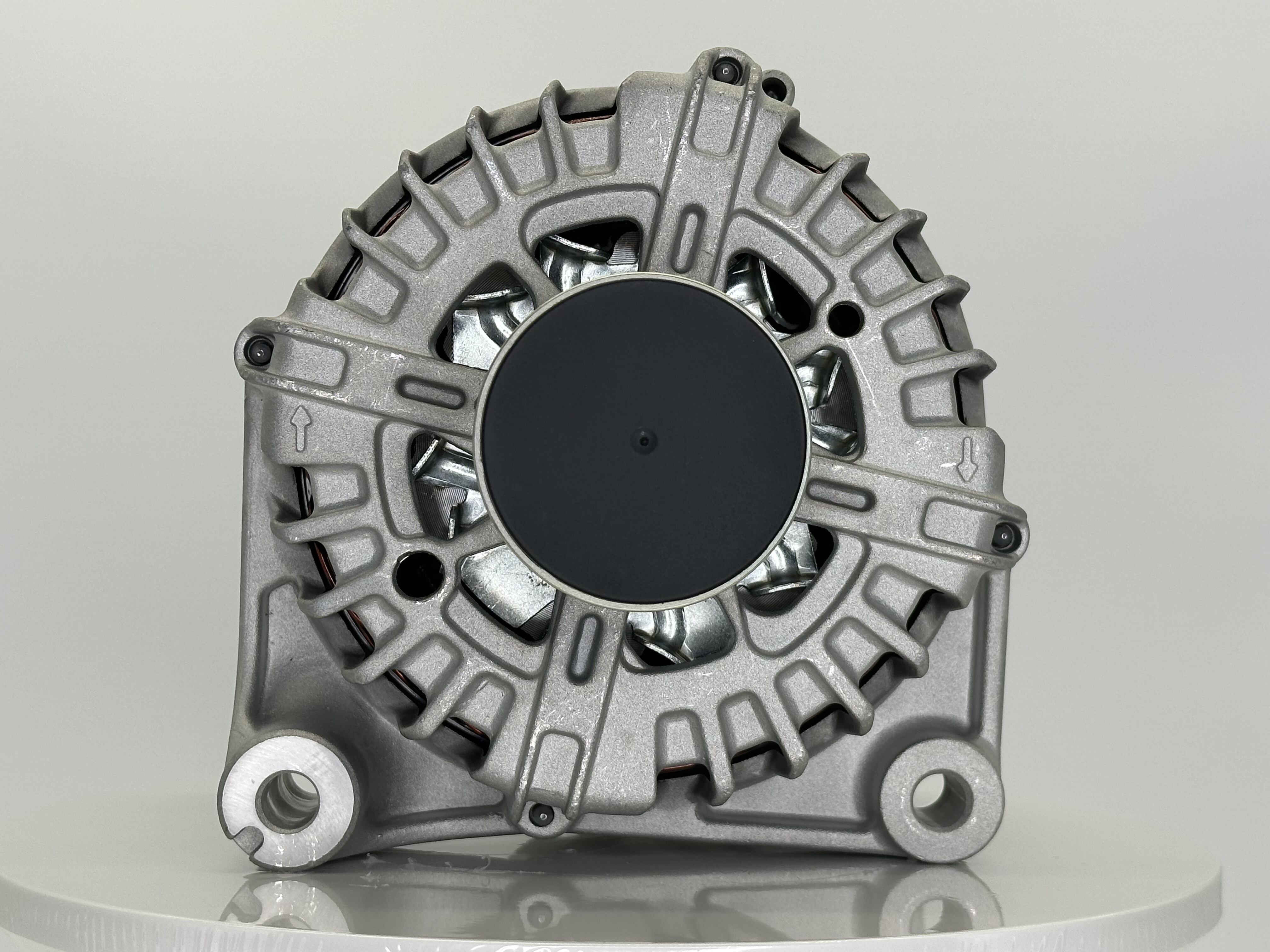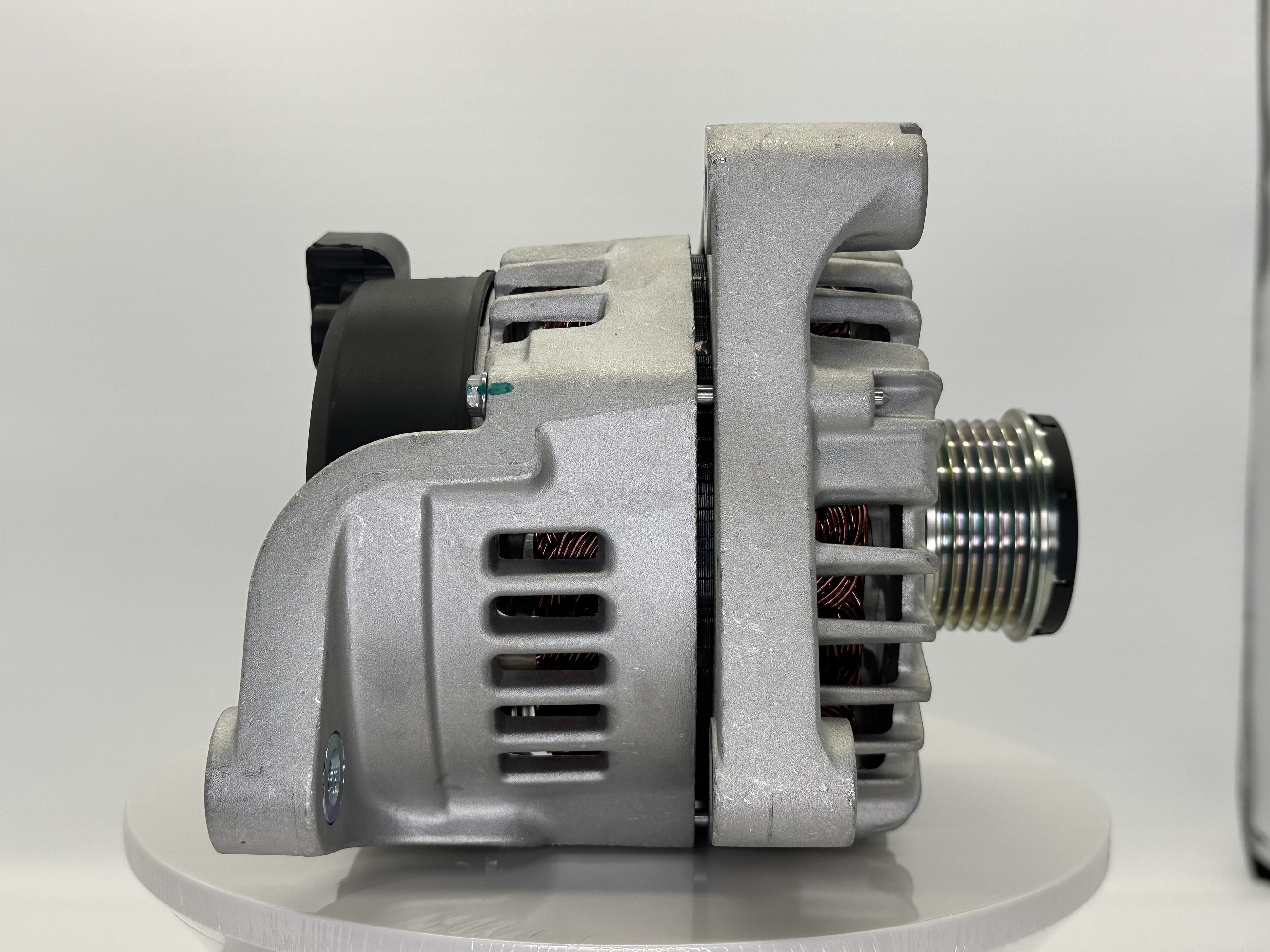Understanding the Heart of Your Vehicle's Electrical System
A car alternator serves as the powerhouse of your vehicle's electrical system, working tirelessly to keep your car running smoothly. This vital component transforms mechanical energy from the engine into electrical power, ensuring your vehicle's battery stays charged and all electrical components function properly. Without a properly functioning car alternator, modern vehicles would be unable to sustain the extensive electrical demands of everything from basic operations to advanced safety features.
Think of your car alternator as a miniature power plant on wheels. While your car's battery provides the initial spark to start the engine, the alternator takes over once the engine is running, generating the electricity needed to recharge the battery and power all electrical systems. This continuous cycle of power generation and distribution makes the alternator an indispensable component in modern vehicles.

The Inner Workings of Car Alternators
Core Components and Their Functions
The car alternator consists of several crucial components working in harmony. At its heart lies the rotor, a spinning electromagnetic field that rotates within a stationary stator. The rotor receives power through brushes and slip rings, creating a magnetic field that induces electrical current in the stator windings. The voltage regulator ensures consistent output, while the rectifier converts the generated AC current into DC power that your vehicle can use.
These components work together in a precise dance of electrical engineering. When your engine runs, the serpentine belt drives the alternator pulley, spinning the rotor at high speeds. This mechanical energy transforms into electrical power through electromagnetic induction, providing a steady stream of electricity to your vehicle's systems.
The Power Generation Process
The process of generating electricity in a car alternator follows the principles of electromagnetic induction. As the engine turns the alternator pulley, the rotor spins inside the stator at speeds typically ranging from 2,000 to 18,000 RPM. This rotation creates a changing magnetic field that induces electrical current in the stator windings.
Modern car alternators can generate significant amounts of power, typically producing between 13.5 and 14.8 volts during normal operation. This output is carefully regulated to protect your vehicle's electrical components while ensuring sufficient power delivery for all systems.
Signs of Alternator Problems
Visual and Auditory Indicators
Recognizing alternator issues early can prevent unexpected breakdowns and costly repairs. Common visual signs include dimming or flickering headlights, especially when multiple electrical accessories are in use. The battery warning light on your dashboard may illuminate, often appearing as a battery symbol or 'ALT' indicator. Strange noises such as grinding or whining sounds can also indicate worn alternator bearings or other mechanical issues.
Another telltale sign is the smell of burning rubber or electrical components, which might suggest a seized alternator putting excessive strain on the drive belt. If you notice any of these symptoms, it's crucial to have your vehicle inspected by a qualified technician promptly.
Performance-Related Symptoms
Alternator problems often manifest through various performance issues. Your vehicle may experience difficulty starting, requiring multiple attempts to turn over. Once running, you might notice erratic electrical behavior, such as power windows operating slower than usual or the radio cutting out intermittently.
Modern vehicles with extensive electronic systems may display more subtle symptoms. These can include strange behavior from the electronic stability control, anti-lock braking systems, or other advanced safety features. Some vehicles might even enter a reduced power mode to conserve energy when detecting alternator problems.
Maintaining Your Car Alternator
Preventive Maintenance Steps
Regular maintenance can significantly extend your car alternator's lifespan. Keep the battery terminals clean and tight, as corrosion can increase electrical resistance and strain the alternator. Inspect the serpentine belt regularly for signs of wear or damage, as this belt drives the alternator.
Avoid excessive short trips with multiple electrical accessories running, as this pattern can overwork the alternator. When possible, allow your engine to run for at least 20 minutes periodically to ensure the battery receives a full charge. Regular electrical system checks during routine maintenance can help identify potential issues before they become serious problems.
Professional Service Recommendations
Professional alternator maintenance should be part of your vehicle's regular service schedule. Have a qualified technician test the alternator's output during annual inspections or when experiencing electrical issues. They can measure the voltage output and check for proper operation under various loads.
Most car alternators last between 7 to 10 years under normal conditions, though this can vary based on driving habits and environmental factors. When replacement becomes necessary, always choose high-quality parts that meet or exceed your vehicle manufacturer's specifications.
Modern Developments in Alternator Technology
Smart Charging Systems
Recent advances in alternator technology have led to the development of smart charging systems. These intelligent alternators can vary their output based on vehicle demands, improving fuel efficiency and reducing emissions. They work in conjunction with the vehicle's computer to optimize charging patterns and protect the battery from overcharging.
Some modern systems even incorporate regenerative braking capabilities, capturing energy during deceleration to assist in charging the battery. This technology is particularly prevalent in hybrid and start-stop equipped vehicles, where efficient energy management is crucial.
Future Innovations
The future of car alternators continues to evolve with automotive technology. Engineers are developing more efficient designs using advanced materials and improved electromagnetic properties. These innovations aim to increase power output while reducing weight and fuel consumption.
As vehicles become increasingly electrified, alternator technology is adapting to meet higher power demands while maintaining reliability. Integration with hybrid systems and advanced energy management solutions represents the next frontier in alternator development.
Frequently Asked Questions
How long does a car alternator typically last?
A car alternator typically lasts between 7 to 10 years or approximately 80,000 to 150,000 miles. However, this lifespan can vary significantly based on driving conditions, climate, and vehicle maintenance practices. Regular maintenance and avoiding excessive electrical loads can help maximize your alternator's service life.
Can I drive with a failing alternator?
While technically possible for a short distance, it's not recommended to drive with a failing alternator. Once the alternator stops working, your vehicle runs solely on battery power, which will eventually be depleted. This can leave you stranded and potentially damage other electrical components. It's best to address alternator issues immediately.
How much does alternator replacement cost?
Alternator replacement costs typically range from $500 to $1,000, including parts and labor. The exact cost depends on your vehicle make and model, the quality of the replacement part, and local labor rates. Some luxury or high-performance vehicles may cost more due to specialized parts or complex installation procedures.

